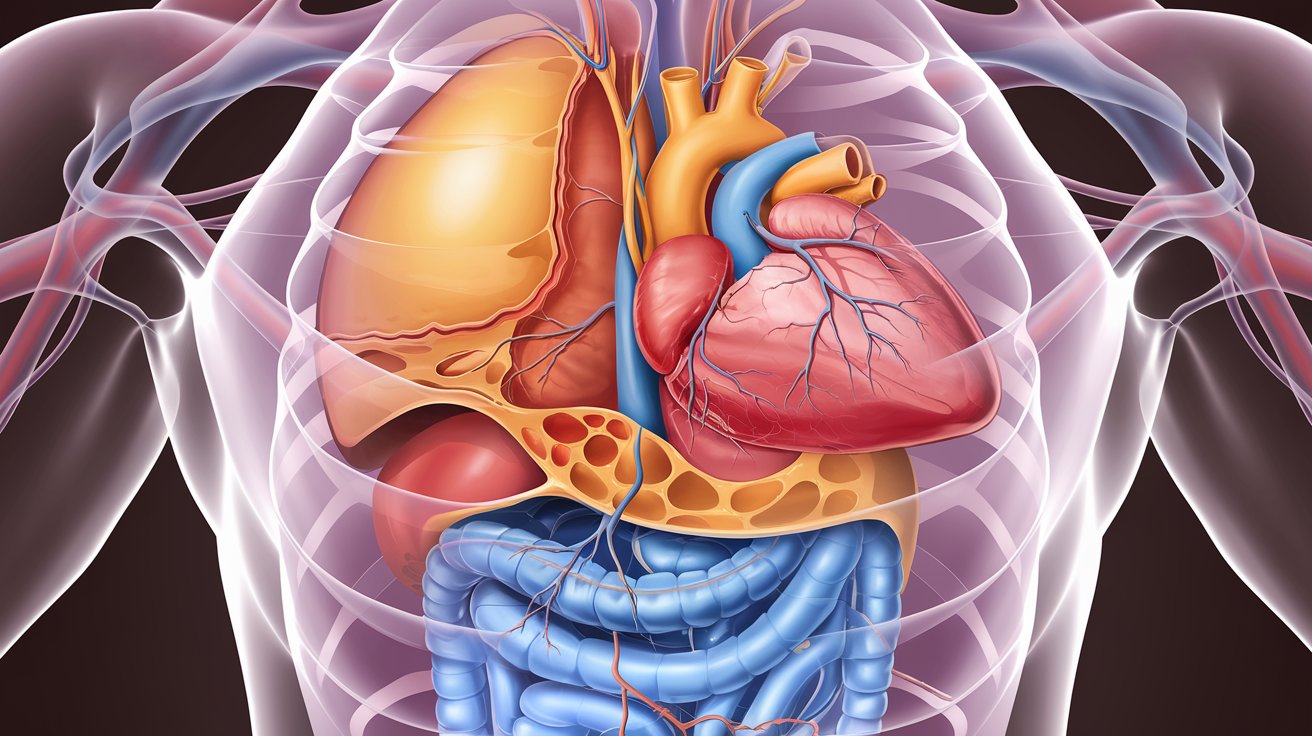
What is a Pericardial Defect Diaphragmatic Hernia? A Pericardial Defect Diaphragmatic Hernia is a rare congenital condition where a hole in the diaphragm allows abdominal organs to move into the chest cavity. This defect can affect the heart's protective sac, the pericardium, leading to complications. Symptoms might include difficulty breathing, chest pain, or even heart palpitations. Diagnosing this condition often involves imaging tests like X-rays, CT scans, or MRIs. Treatment usually requires surgical intervention to repair the diaphragm and reposition the organs. Understanding this condition is crucial for early detection and effective management. Let's dive into 25 fascinating facts about this medical anomaly.
Key Takeaways:
- Pericardial Defect Diaphragmatic Hernia is a rare condition where abdominal organs move into the chest, affecting breathing and heart. Early diagnosis and multidisciplinary treatment are crucial for better outcomes.
- Genetic and environmental factors can contribute to this condition. Surgical repair, neonatal care, and regular follow-up are essential for managing pericardial defect diaphragmatic hernia and improving long-term prognosis.
What is Pericardial Defect Diaphragmatic Hernia?
Pericardial defect diaphragmatic hernia is a rare congenital condition. It involves an abnormal opening in the diaphragm, allowing abdominal organs to move into the chest cavity. This can affect the heart and lungs. Here are some intriguing facts about this condition.
-
Rare Occurrence: This condition is extremely rare, with fewer than 200 cases reported worldwide.
-
Congenital Condition: It is present at birth, meaning it develops during fetal growth.
-
Diaphragm Defect: The defect is an abnormal opening in the diaphragm, the muscle that separates the chest from the abdomen.
-
Organ Displacement: Abdominal organs like the stomach, intestines, or liver can move into the chest cavity through this opening.
-
Heart Involvement: The condition can affect the pericardium, the sac surrounding the heart, leading to complications.
Symptoms and Diagnosis
Recognizing the symptoms and diagnosing this condition can be challenging due to its rarity. Here are some key points to consider.
-
Breathing Issues: Infants may have difficulty breathing due to lung compression.
-
Heart Problems: There may be heart-related symptoms like irregular heartbeat or murmurs.
-
Gastrointestinal Symptoms: Vomiting, difficulty feeding, or abdominal pain can occur.
-
Chest X-ray: A chest X-ray can reveal the presence of abdominal organs in the chest cavity.
-
Ultrasound: Prenatal ultrasound may detect the condition before birth.
Causes and Risk Factors
Understanding the causes and risk factors can help in early detection and management. Here are some important facts.
-
Genetic Factors: Genetic mutations may play a role in the development of this condition.
-
Environmental Factors: Exposure to certain environmental factors during pregnancy might increase the risk.
-
Family History: A family history of congenital diaphragmatic hernia can be a risk factor.
-
Associated Conditions: It can be associated with other congenital anomalies like heart defects.
-
No Known Prevention: There is currently no known way to prevent this condition.
Treatment Options
Treatment varies depending on the severity of the condition. Here are some treatment approaches.
-
Surgery: Surgical repair of the diaphragm is often required to correct the defect.
-
Neonatal Intensive Care: Newborns may need intensive care to manage breathing and heart issues.
-
Follow-up Care: Regular follow-up with a pediatrician and specialists is crucial for monitoring.
-
Nutritional Support: Infants may need nutritional support to ensure proper growth and development.
-
Multidisciplinary Approach: A team of specialists, including surgeons, cardiologists, and pulmonologists, often collaborates on treatment.
Prognosis and Long-term Outlook
The long-term outlook for individuals with this condition can vary. Here are some key points about prognosis.
-
Varied Prognosis: The prognosis depends on the severity of the defect and associated complications.
-
Survival Rates: Advances in medical care have improved survival rates for affected infants.
-
Quality of Life: Many individuals can lead a normal life with proper medical care and follow-up.
-
Potential Complications: Long-term complications can include respiratory issues, gastrointestinal problems, and heart conditions.
-
Ongoing Research: Research is ongoing to better understand the condition and improve treatment outcomes.
Final Thoughts on Pericardial Defect Diaphragmatic Hernia
Pericardial defect diaphragmatic hernia, though rare, presents unique challenges in diagnosis and treatment. Understanding its symptoms, causes, and potential complications is crucial for timely intervention. Early detection can significantly improve outcomes, making awareness vital for both medical professionals and the general public.
Advancements in imaging techniques and surgical procedures have enhanced the ability to manage this condition effectively. However, ongoing research and education remain essential to further improve patient care. If you or someone you know experiences unexplained chest pain or respiratory issues, seeking medical advice promptly can make a significant difference.
Stay informed, stay proactive, and never underestimate the importance of early medical intervention. Knowledge truly is power when it comes to rare medical conditions like pericardial defect diaphragmatic hernia.
Frequently Asked Questions
Was this page helpful?
Our commitment to delivering trustworthy and engaging content is at the heart of what we do. Each fact on our site is contributed by real users like you, bringing a wealth of diverse insights and information. To ensure the highest standards of accuracy and reliability, our dedicated editors meticulously review each submission. This process guarantees that the facts we share are not only fascinating but also credible. Trust in our commitment to quality and authenticity as you explore and learn with us.
